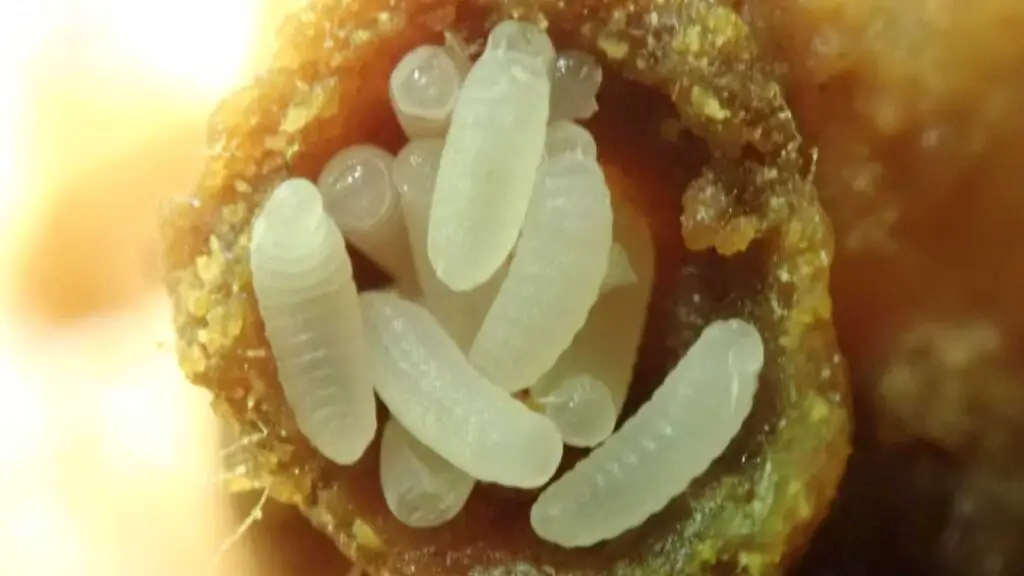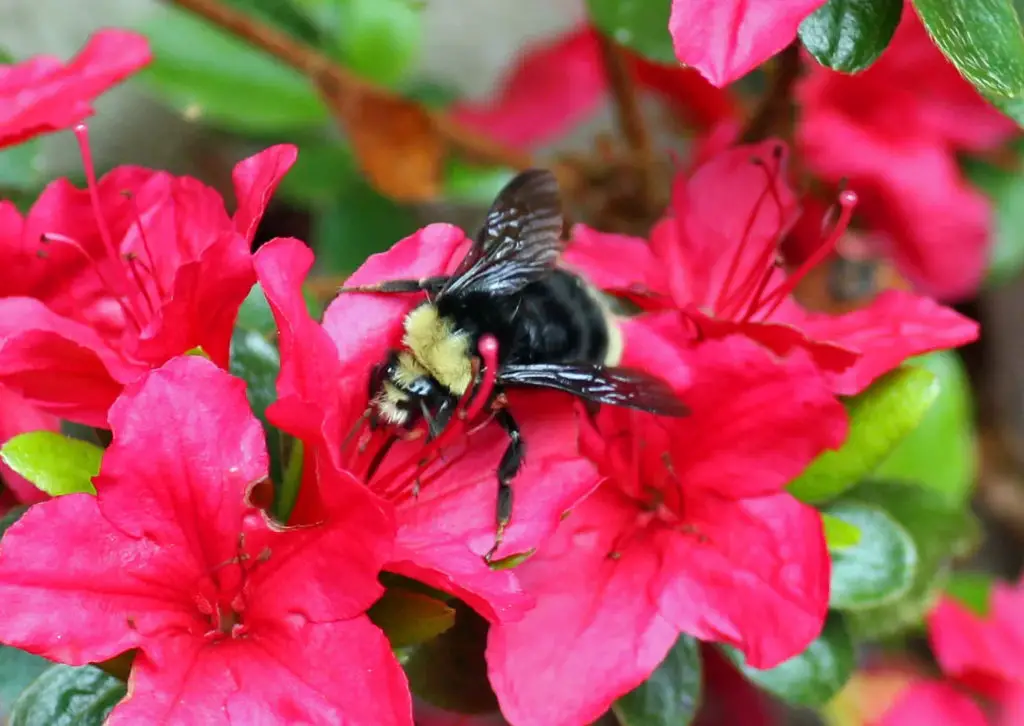Affiliate Disclaimer - As an Amazon Associate I earn from qualifying purchases.
It supports the website. So, Thank you
I’ll level with you, bumblebees are some of my all-time favorite bees. Their fuzzy bodies and easily identifiable coloration also makes them one of the easiest bees to spot in the garden. But have you ever looked at one and wondered how long do bumblebees live?
On average, a bumblebee will live for around 28 days. That said, their lifespan could be anywhere between one week and one year.
A lot of this is to do with the role that bumblebee plays within the next. For example, queen bumblebees will live the longest while males might not make it much past the two-week mark.
In any case, the lifecycle of a bumblebee is very interesting and I’d love to share more about it with you in this post.
Table of Contents
The Buzz About Bumblebees
While there are 20,000 species of bees in the world, only 250 of these are species of bumblebees. But while there aren’t a huge number of types of bumblebee compared to other species, they are among some of the most well-loved because of their cute appearance and the fact that they’re very docile.
These insects feed on nectar and fly from flower to flower collecting the sweet substance. They have hairy bodies that are banded in black, yellow, orange and even red, depending on the species.
Typically, bumblebees live in a nest but these nests are much smaller than that of the honey bee with usually no more than a few hundred bumblebees maximum. Honey bee nests could have tens of thousands of individuals.
What’s The Average Lifespan Of A Bumblebee?
Bumblebees could live anywhere between a couple of weeks to an entire year and much of this depends on the type of bumblebee, its role within the colony and other factors, which I’ll talk about later in this article.
The queen bumblebee has the longest lifespan in the entire colony and she usually lives for around one year. It is only the queen that hibernates and this has a lot to do with why she lives as long as she does. What’s more, they have a very low metabolism which ensures they live as long as possible. When spring comes around, it is up to the queen bumblebee to ensure a new colony is ready to go.
Worker bumble bees don’t live anywhere near as long as the queen. In fact, the maximum lifespan for a worker is around six weeks although some may not make it past two weeks, depending on the environment. The main role of these bees will be to either collect nectar or to take care of the nest.
Finally, we have the male bees and they have the shortest lifespan of all, usually not living past two weeks of age. Once male eggs are laid, the adult bees will fly the nest and not come back. Their only goal in life is to find a virgin queen to mate with and once they’ve done that, it’s lights out!
What Can Affect The Lifespan Of A Bumblebee?
The type of bumblebee does have a significant impact on how long the individual will survive but there are some factors that can drastically reduce the lifespan of a bee.
For example, the use of pesticides is very problematic not only for bumblebees but for many other types of bee in the United States. In fact, it’s been shown that one of the main causes of declines in bumblebee numbers is the use of pesticides which can affect the bee’s ability to reproduce. If you are looking to keep insects at bay in your garden then using natural methods is the best way to protect bumblebees and prevent them from dying.
Another issue faced by the bumblebee is a loss of habitat and it’s said that this is the main cause of decline in many countries around the world. It’s really important that bumblebees have appropriate nesting grounds but with woodlands being cleared, housing developments being built, and other human impacts, it’s becoming more and more of a challenge for bumbles to find somewhere suitable to nest.
Of course, just like any other animal, bumblebees are prone to certain diseases and pathogens which can result in the death of an entire colony when it gets out of control. They could be affected by bacterial, fungal, and viral infections as well as parasites.

The Lifecycle Of A Bumblebee By Season
Bumblebees, or at least the queens, will hibernate throughout the winter but during spring and summer, there’s a real hive of activity going on. Let’s take a look at how these bees move through the seasons.
Spring
When the temperature begins to rise, it rouses the queen bumblebee who has been in a state of dormancy all winter. She spends her time snuggled up under the ground and has fat stores in her body to keep her going through the cold months.
Initially, the queen will feed on flowers in order to boost her energy and this will be her main priority when she wakes up. After this, she will go in search of a nest site which could be underneath a garden shed, inside a bird box, in a hole in the ground or anywhere else she deems appropriate.
Once the queen has selected her nest she will then start collecting pollen from local flowers which she’ll take back to the nest site. She’ll build a mound with this and reinforce it with wax that she secretes from her body.
The queen will also go from flower to flower collecting nectar which is then stored in little wax pots placed neatly in front of her mound of pollen. This mound is where she will lay her eggs and, when she does, she’ll sit on top of the mound, vibrating to stay warm.
With plenty of little pots of nectar, the queen has lots of sustenance as she’ll need to stay with the eggs until they hatch. This can take several days. When the larvae are born, the queen bumblebee will feed them nectar and pollen for around two weeks. At this point, they’ll cocoon before turning into an adult bee. But we’ll look at the various bee stages in more detail a little later on.
Summer
When the queen lays her first brood, this will be made entirely of female worker bees. These bees, once developed, are able to take care of the nest while others will stand guard. There will also be a number of these females that head off to collect more pollen and nectar which they bring back for the colony as food. This is good news for the queen as she now has workers to go out for her and she can remain inside the nest.
As we move into the later part of summer, the queen will start producing male offspring as well as new queens which will ensure the continuation of the colony next year. The males will fly away once they are fully developed and find another queen to mate with, although a lot of males won’t find one and end up never mating before they die.
Of course, our nest will have new male visitors coming to mate with the new virgin queens who are busy fattening themselves up ready for hibernation over winter. As for the original queen, she and her nest will slowly fade away throughout the fall ready for a new generation the following spring.
Bumblebee Life Stages
Bumblebees aren’t born looking the way that we see them flying around our backyards. There are four main stages to a bumblebee’s life so let’s take a closer look.
The Egg
When the queen finds a suitable nesting site, she will make little cells out of wax into which she’ll lay her eggs. These eggs were fertilized the previous year and the queen will have held onto them during her period of hibernation. Once the eggs are inside the cells, she’ll incubate them until they’re ready to emerge.
The Larva
When the eggs are developed, they enter into the larval stage at which point, the bumblebees look more like little maggots than the hairy creatures we recognize. They get to this point after about four days and will continue on like this until they’ve shed their skin at least three times, which takes around 14 days. At this point, they’ll make a silk cocoon.

The Pupa
After a period of 14 days, the pupating bumblebee larvae will emerge from their cocoons by biting through them.
The Adult Bumblebee
It’s usually the adult female bumblebees that are the first to come out of their cocoons. While they’ve been inside, the queen has been busy laying even more eggs so there’s a continuation of new bees coming throughout the season.
Final Thoughts
Bumblebees are a common sight in gardens around the world but does the average person really know that much about them? These fascinating creatures have a very interesting life cycle with the queens living up to a year in order to start a new nest and ensure the survival of the species.
On the flip side, some bumble bees might not live longer than two to six weeks, but this all depends on their role within the colony and external factors like disease and habitat loss.




